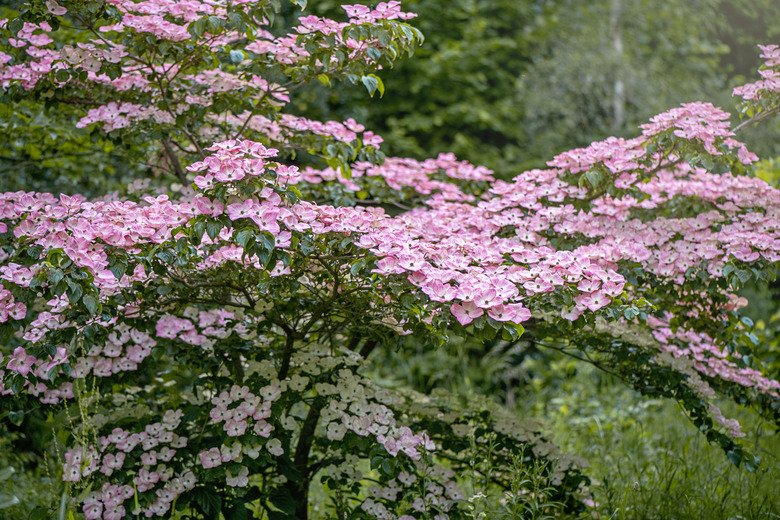What Causes Dogwood Leaves To Turn Brown?
We may receive a commission on purchases made from links.
Dogwood trees are popular ornamentals with exceptionally beautiful, tiered horizontal branching. They offer three seasons of interest. Spring brings the appealing pink or white flowers followed by red berries in summer and fall leaf display. While they are vulnerable to diseases and pests like every plant, most problems are caused by poor growing conditions or incorrect cultural care.
Meet the Dogwood
Meet the Dogwood
Dogwoods (Cornus spp.) are a varied group of trees and shrubs appreciated for their grace and eye appeal. While you can find lists of some 30 to 60 species of dogwoods, the most popular is likely the flowering dogwood (Cornus florida). It is a small, native forest understory tree with considerable charm. Two other ornamental species are kousa dogwood (Cornus kousa) and Cornelian cherry dogwood (Cornus mas).
While the flowering dogwood and kousa dogwood are noted for their flowers, these are not actually flowers but bracts — modified leaf structures that look like petals. The bracts circle the small, true flowers that cluster in the center of these bracts. Fruits are berries, often a dramatic scarlet red.
Care for the Dogwood
Care for the Dogwood
Dogwoods are forest understory trees, and it helps to keep this in mind if you introduce one into your backyard. In the wild, they grow in partially shady sites in slightly acidic soil with ample organic content as well as regular moisture. Their soil usually offers excellent drainage and their site good air circulation.
Their position in a garden should mimic wild conditions to the largest extent possible. In short, they grow best in dappled sun with generous irrigation and an annual application of organic matter, such as leaf compost. They do not tolerate a full-sun site or one that is hot and dry, poorly drained, or wet.
Determine the Cause of Browning Leaves
Determine the Cause of Browning Leaves
If you see browning leaves on your dogwood, the first things to check are whether the site is appropriate and the tree is getting the best cultural care. Extremely dry soil and/or too much sun can wilt the dogwood tree's leaves. This is termed leaf scorch, causing yellowing, browning leaves.
Aside from cultural care, the number of diseases and problems your dogwood is likely to experience depends in large part on the species. The favorite, flowering dogwood, is susceptible to many diseases and insect pests, while kousa dogwoods are more resistant, and Cornelian cherry dogwood is virtually pest-free.
Most diseases that can brown dogwood leaves are fungal diseases. These include Ascochyta blight, a fungal blight that causes brown-gray spots to appear in periods of excess rain; dogwood anthracnose, which causes purplish blotches on the leaves; and septoria leaf spot, which causes purplish, irregularly shaped leaf spots. To treat a fungal condition, use a copper-based fungicide according to label directions.
